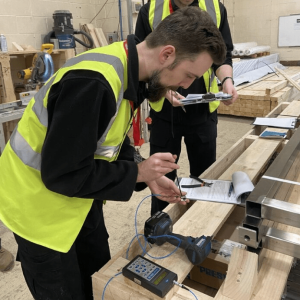How is Vibration Testing Conducted?
There are two main ways to conduct a Hand-Arm Vibration (HAV) test: Objective Testing and Subjective Testing.
- Subjective testing: This involves asking workers to rate the intensity and duration of the vibration they feel. It’s less precise than objective testing but can be a helpful screening tool. Think of it as a questionnaire where workers describe the vibration they experience, this is subjective vibration testing.
- Objective Testing: Objective vibration testing uses a specialised device called an accelerometer to measure vibration directly. The accelerometer is a tiny sensor attached to the tool handle, recording the shakes and tremors. These instruments typically measure:
- Acceleration: How intense the vibration is.
- Frequency: How fast the tool vibrates.
- Duration: How long you’re exposed to the vibration.
Objective testing is preferred for its accuracy and reliability. However, subjective testing can be a handy supplement, especially when objective testing isn’t feasible due to cost or practicality.
Remember: Regardless of the testing method, the goal is to identify potential HAV risks and take steps to reduce exposure, like using low-vibration tools, taking breaks, and wearing padded gloves. By being mindful and taking precautions, you can help protect your workforce’s hands and arms from HAV’s harmful effects and ensure your business is compliant with regulation.


